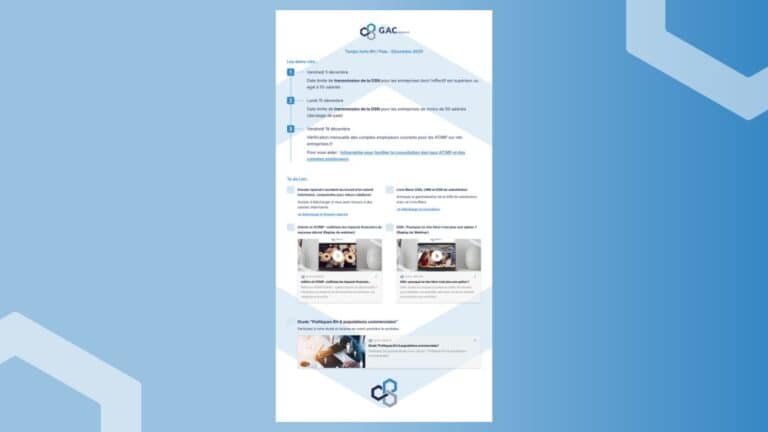Our DSN specialists will explain the 4 main DSN anomalies with concrete examples.
But before we get to the heart of the matter, we'd like to test your knowledge.
Test your DSN knowledge!
Anomaly 1: Social security daily allowance entitlements (DSN block 51)
When an employee is on sick leaveIn the case of the DSN, Social Security calculates its IJSS on the basis of DSN information, in particular on the basis of the reinstated salary entered under type code 003 - Gross reinstated salary.
In many cases, the reinstated salary does not reflect the actual pay.
It is not uncommon, for example, for vacation pay, bonuses, overtime and benefits in kind not to be taken into account when calculating the reinstated salary.
What are the consequences?
When the reinstated salary does not reflect the payroll, there are two possibilities. Either employees receive a reduced amount of IJSS, which represents a loss of earnings if the employer no longer maintains their salary. Or employees receive a higher amount of IJSS, which may represent a risk for the employer.
When all or part of the benefit is maintained, the employer must deduct the IJSS paid by Social Security (which are not subject to contributions except CSG-CRDS at the rate of 6.70%).
Thus, if the gross IJSS amount is reduced, the employer will wrongly pay additional contributions on the basis of the increased gross salary.
Good practice to remember Check the settings of each item to ensure that they are correctly restated for the calculation of the reinstated salary.
Anomaly 2: Employee pension rights (DSN Block 53)
Let's take the example of a company that receives a contribution reminder 30,000 from its supplementary pension fund.
After detailed analysis, it turns out that this reminder concerns a discrepancy between the contributions declared by the company and those recalculated by the organization on the basis of the information contained in the DSN.
And yet.., no blocking anomalies had been detected.
After analysis, we identified the following practice: for an employee on unpaid leave, the company rightly prorated the Monthly Social Security Ceiling (PMSS) according to the number of days absent.
However, in DSN, there was no value for the unit of measurement S21.G00.53.003 "40 - Calendar days of the employment period taken into account in calculating the Social Security ceiling".
The organization therefore considered that the employee was present for the whole month and recalculated the PMSS in its entirety.
The consequences are as follows:
- Wrong pension rights for the employee
- An unjustified contribution reminder for the employer
Best practices to remember : check consistency between data in blocks 40 (employment contract) and 53 (activity) and ensure that all values are correctly entered.
Anomaly 3: Employee unemployment rights (DSN blocks 51 and 52)
Let's take the example of a company that declares none of its bonuses in the DSN: neither in the salary subject to unemployment insurance contributions (type code 002) in structure S21.G00.51.011, nor in structure S21.G00.52 "Bonus, gratuity and indemnity".
Failure to declare these bonuses means that France Travail is unaware of them, and as a result, employees' entitlement to unemployment benefits is reduced.
As a result, they are not entitled to unemployment benefits, even though the employer pays contributions on these bonuses.
Best practice to remember: check the configuration of each premium to ensure that it feeds the correct structure expected in DSN (S21.G00.51 or S21.G00.52).
This check must also be carried out for indemnities linked to the termination of employment contracts.
Anomaly 4: URSSAF contributions (Blocks 22, 23 and 81)
Let's take the case of a company that declares an incorrect unemployment base for individual employee contributions (block 81, type code 040) by not limiting the base to 4 PMSS.
However, the Chômage base for aggregated contributions (block 23, CTP code 772) is correct.
URSSAF therefore notes that the individual remuneration base (block 81) does not correspond to the base declared (in block 23) and wrongly issues a reminder of contributions.
Good practice to remember Data consistency. This means checking that the URSSAF contributions paid (block 22) correspond to the amount declared (block 23), and that the aggregate contributions (block 23) correspond to the individual remuneration declared (block 81).








